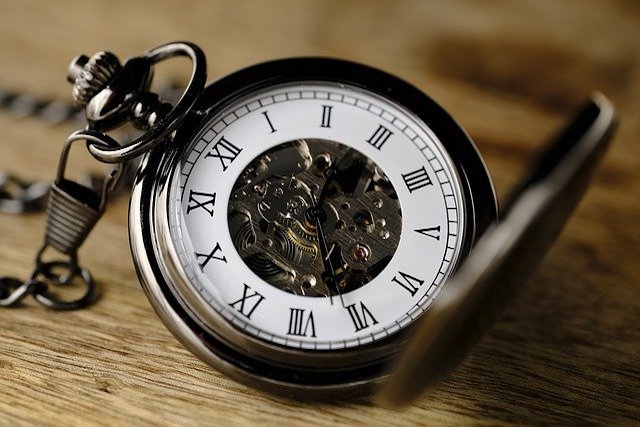Whether due to financial pressure, cash flow challenges, or the natural winding down of a business, liquidating a company is a significant decision that requires careful consideration. Many business owners wonder, “how long does it take to liquidate a limited company?” and worry about the complexity of the process.
Understanding the steps involved can help you avoid common pitfalls and approach the liquidation efficiently. This blog will guide you through what a quick and smooth liquidation looks like, providing you with the critical knowledge to make more informed decisions while navigating the process. Additionally, we’ll cover how working with a licensed insolvency practitioner ensures that every phase is handled professionally and in a way that protects your interests.
In this blog, we’ll guide you through the liquidation process to ensure not only a quick liquidation, but also an effective and well-executed one to boot.
 What Does Company Liquidation Mean?
What Does Company Liquidation Mean?
Liquidation refers to the process of winding up a business by selling its assets to repay creditors and shareholders. Once liquidation is complete, the business will cease to exist, and employees will typically be made redundant. This process is usually triggered by severe cash flow issues or legal action from creditors.
There are two main types of liquidation to remember:
- Compulsory Liquidation: Initiated by creditors when a company is unable to pay back its debts as and when they are due.
- Voluntary Liquidation: Initiated by company directors when they choose to wind up the business. This can be either due to financial difficulties (Creditors Voluntary Liquidation), or for reasons like retirement (Members Voluntary Liquidation).
Selecting the right liquidation method for you will depend on the current state of your company. This is in reference primarily to the solvency of your company, and the specific circumstances surrounding its prospective closure.

A licensed insolvency practitioner will be able to assist you in making this decision. They can also play a major role in ensuring the actual operation is done properly and without mistakes. An insolvency practitioner, once instructed, will immediately gain as thorough an understanding as possible of your firm’s current predicament, as well as its needs. They will then make a judgement call to recommend the optimal course of action going forwards.
The length of time it takes to liquidate a limited company varies depending on several factors. Generally, a business can take anything from three months to over a year to complete the liquidation process and be wound up. Factors like company size, complexity of finances, creditor count, presence of disputes, and the type of liquidation, will all play a role.
Insolvent businesses, which are more likely to undergo a Creditors’ Voluntary Liquidation (CVL) or compulsory liquidation, often have much lengthier timeframes due to the pressing need to manage claims from creditors and resolve any legal issues that may be looming overhead.
When it comes to Creditors’ Voluntary Liquidations, the process of placing the company into a CVL can take as little as 14 days. However, completing the liquidation is a process that will often take between 6-24 months depending on the size of the firm and its individual circumstances.
On the other hand, companies opting for Members’ Voluntary Liquidation (MVL) may anticipate a much quicker turnaround, particularly if all outstanding debts are already settled. However, it’s important to note that even seemingly straightforward MVLs can be prolonged due to statutory waiting periods and potential HMRC clearance.

In addition to the type of liquidation, in order to actually answer the question of “how long does it take to liquidate a limited company?”, we need to consider several important factors that can seriously impact the timeline involved:
- Complexity of Company Finances: The more intricate the company’s financial situation is, the longer it will take to assess assets, liabilities, and debt structures. A firm with significant debts or numerous creditors will need more time than one with simpler financials.
- Creditor Claims/Disputes: Any disputes among creditors will delay the liquidation process significantly. In a scenario with multiple creditors, any disagreements regarding asset allocation must be resolved before liquidation can progress. In cases where creditors are contesting the planned distribution of assets, you can expect months to be added to the liquidation timeframe, at least.
- Industry-Specific Challenges: Some industries may require a more specialised approach to liquidation than others. For instance, a company in construction may have some complex contracts that will need to be considered, while a retail firm will likely hold significant stock that will need to be sold off quickly. Such industry-specific challenges will only add time to the process.
- The Insolvency Practitioner (IP): The insolvency practitioner and their approach can, naturally, also have an impact on timelines. Experienced IPs will be able to expedite the process more than one that’s less established.
- Instruction Timing: Working with an IP earlier in the decision-making process will ensure more time to plan, meaning fewer unexpected issues that could affect completion time.
What Is The Best Method For Quick Liquidation?
If speed is your number one priority, a Members’ Voluntary Liquidation is often the quickest route, providing your company is solvent. In contrast, an insolvent firm may take longer due to involvement by creditors and numerous statutory requirements. However, the most important factor in a quick liquidation is often how early you partner with a skilled insolvency practitioner.
For further information on which is the best method for a quick liquidation, we have outlined both so you can pinpoint exactly which is most relevant to your firm:
Compulsory Liquidation
Compulsory liquidation begins with a Winding Up Petition being issued by a company creditor. If the firm fails to pay its debts within the necessary timeframe, the creditor is then eligible to take the matter to court. Once the court has issued a winding up order, the company will be forced down the path to liquidation, and an independent party will be appointed to take control of the situation.
In this scenario, the directors lose all powers, and a thorough investigation will be conducted into the firm’s finances, as well as the conduct of the directors — to ensure that no wrongdoing was present, such as wrongful trading or fraudulent activities.
The entire process of a compulsory liquidation can take anywhere from six months to two years, sometimes even beyond, depending on the complexity of finances and the speed with which creditor claims can be settled.
Voluntary Liquidation
In a Creditors’ Voluntary Liquidation, the company’s directors will initiate the liquidation for one of a number of reasons. The process will start with the appointment of a licensed insolvency practitioner who will take control of the company’s assets, liabilities, and day-to-day decision making.
The role of the liquidator in a voluntary liquidation is to ensure that all prospective creditors receive their fair share of any proceeds raised from the sale of company assets. As part of the process, the appointed liquidator will hold key meetings with creditors. The aim of these meetings is to explain to them how the process will unfold, in order to ascertain whether any additional steps are necessary.
While the initial phase of a CVL can be completed in a matter of weeks, sometimes as little as 14 days, the complete liquidation process often takes months, depending on the complexity of the operation and how quickly key assets are able to be sold. Similarly, an MVL can move very quickly if the firm is solvent and well-prepared for liquidation. However, even MVLs are beholden to waiting periods mandated by law to allow for potential creditors to make their claims.

Making Your Decision For a Quick Liquidation
It’s always important to note that rushing the process of winding up your business can have serious legal and financial implications. It’s always highly recommended that you seek professional advice from a licensed insolvency practitioner as soon as possible if company closure is on the horizon — particularly if you are determined to secure a quicker liquidation.
A skilled IP instructed early into the process can streamline things, resolve creditor claims in an orderly fashion, and address potential disputes efficiently.
What Happens After Liquidation?
What happiness after liquidation will depend on the situation. Generally, post-liquidation, once assets have been sold and proceeds have been distributed, there are several key steps ahead. One of the first of these is a formal investigation into the directors’ conduct in the firm’s final months.
If no issues are present, the director has the right to continue with whatever business dealings they may already be working on, or any planned. However, if wrongful trading, fraudulent behaviour, or any other form of misconduct is discovered, life after liquidation becomes more complex. Consequences such as personal liability or being banned from acting as a director for up to 15 years are likely.
Additionally, for those free to start over again, there are still some factors that must be considered. Directors considering starting a new business must take extremely special care if they are planning to use the same, or a similar name, or operate within the same industry, This is to avoid potential confusion with the old operation. There are very specific regulations surrounding such ‘phoenix companies’, and any failure to imply could incite penalties.
Do You Need Liquidation Advice? We Can Help.
Liquidating a business is a complicated endeavour, but with the right guidance, it can be handled efficiently and effectively. Are you looking to wrap your firm’s affairs in as neat a bow as possible so you can move on with as few ties as possible? At Inquesta, we specialise in helping businesses navigate liquidation, ensuring that all the necessary steps are taken with care and expertise.
We understand that no two companies are the same, which is why we always undertake a thorough investigation into the circumstances that brought you to us. We do this to ensure we have as clear an understanding of your business, from top-to-bottom, as possible. Once we have a grasp on your circumstance, we can cater our service exactly to you and your needs.
If you’re looking to liquidate your company as quickly as possible, it’s important to work with a firm you know you can trust. Our dedicated team of expert advisors have decades of experience helping firms from all areas of industry and all shapes and sizes close down in the most efficient way possible.
For more information about how Inquesta can help with liquidating your limited company, contact our team today or request a free, no-obligation consultation.


